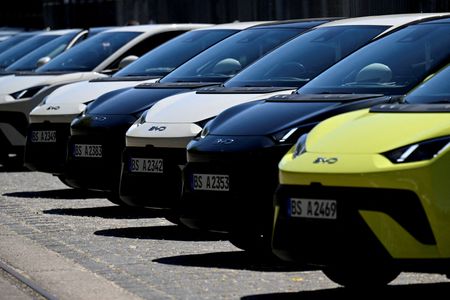By Sudarshan Varadhan and Ashley Tang
SINGAPORE/KUALA LUMPUR (Reuters) -Malaysia is boosting coal-fired power output and importing the fuel at record levels, a Reuters analysis of data showed, taking advantage of low prices even as it pledges to increase use of gas-fuelled electricity generation in the longer term.
The Southeast Asian nation is the fifth-largest exporter of liquefied natural gas but has said it could start importing the superchilled fuel due to rising demand and dwindling gas reserves. It has progressively ramped up coal-fired power output to address surging demand driven by data centres.
Coal-fired power output in Peninsular Malaysia, which accounts for about 80% of power demand, rose nearly 9% in May and June. That was three times faster than power demand growth of 3%, data from Malaysia’s Grid System Operator (GSO) showed.
Output from coal-fired power plants rose 16.8% in the first half of July, the data showed, while power demand increased 5.2%.
Rising demand has pushed Malaysia to import a record 20.9 million metric tons of coal in the first half of this year, data from analytics firm Kpler showed.
“Low coal prices, coupled with regulated and capped power prices in Malaysia, have discouraged gas-fired generation this year,” said Kesher Sumeet, LNG analyst at Energy Aspects.
Coal’s share of power generation rose to nearly 60% in the first half of 2025, the GSO data showed, putting it on track for the highest annual levels since the COVID-19 pandemic, while natural gas-fired power’s share could slip to the lowest level since the pandemic’s economic shutdown curbed demand.
Gas-fired power output has fallen for ten straight months through June at an average of 11.3% every month, and fell 15.3% in the first half of July.
Raksit Pattanapitoon, analyst at Rystad Energy, said Malaysia will continue to depend on coal in the short and medium-term as fuel costs are nearly 40% lower.
“The tipping point will be when solar penetration into Malaysia’s grid is sufficient to force inflexible, baseload coal to shut down during daytime, but Rystad Energy does not expect this to happen on a regular basis until the 2030s,” he said.
Malaysia plans to boost gas-fired capacity by 50% and more than double renewable capacity by 2030 to cut coal use and meet growing power demand from data centres – which are expected to rise to 52% of peninsular demand, from 2% now.
Power demand fell during the first quarter due to tepid residential demand, but is expected to increase as much as 4.5% this year, according to state-run utility Tenaga Nasional Bhd.
(Reporting by Sudarshan Varadhan and Ashley Tang; Editing by Joe Bavier)











